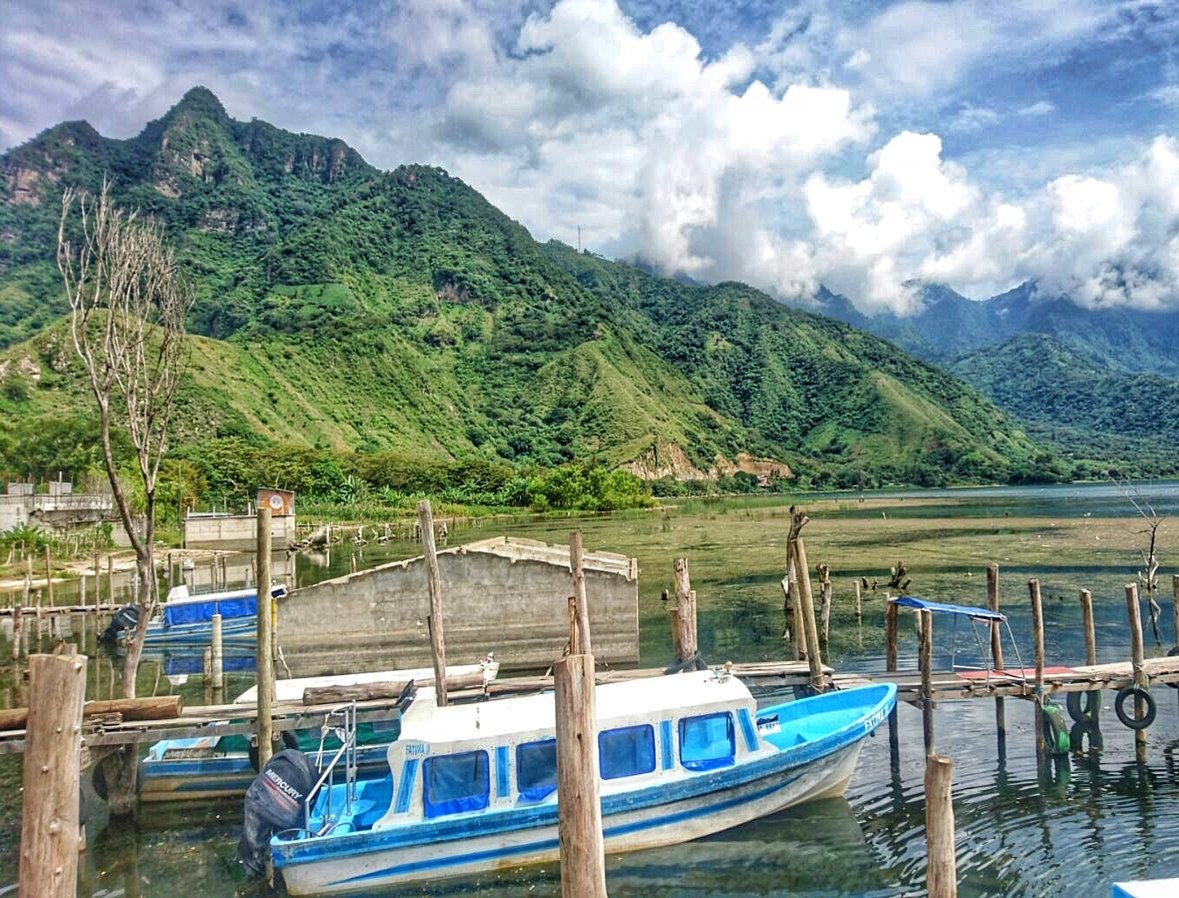Anyone who read my gushing blog post on Antigua will know that I love Guatemala – but there is, of course, so much more to this country than one charming colonial city.
Our first stop in Guatemala was Flores, an incredibly picturesque town on a small island on Lake Peten Itza. Connected to the mainland by a short causeway, Flores island is tiny – you can walk around it in about 20 minutes – and comes with some seriously beautiful views. Our hotel looked right across the water, and this lovely lakeside spot was the perfect spot to catch up on some work. Or try to catch up on some work; after a couple of Bravha beers I wasn’t that productive.
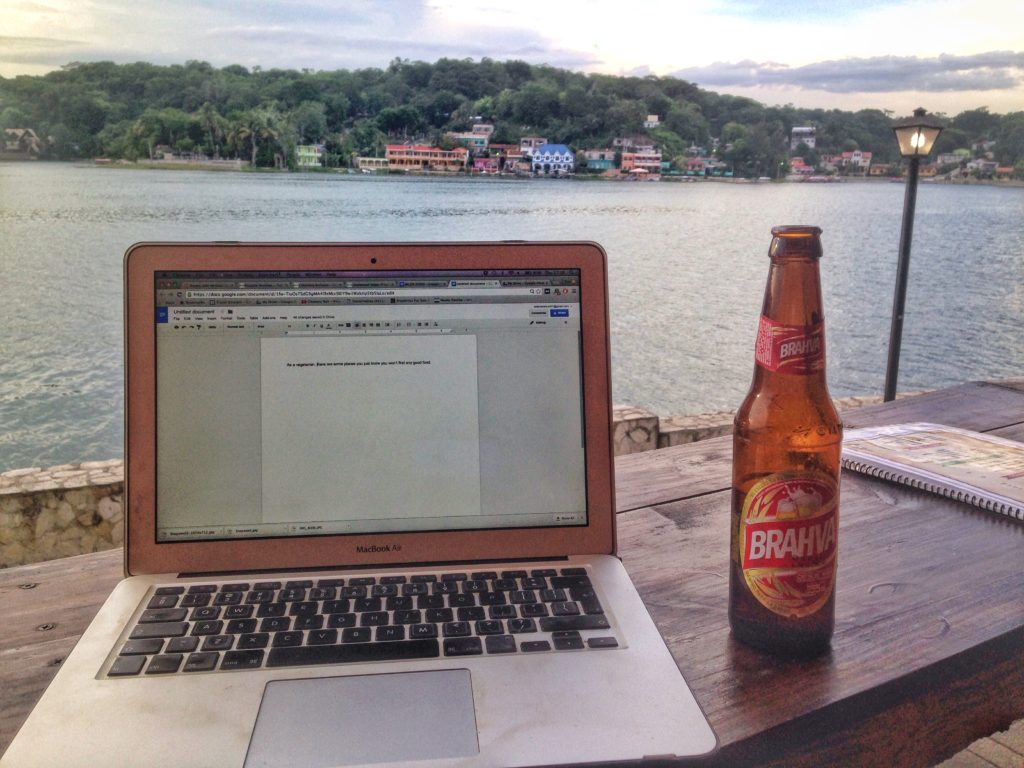
werk werk werk werk werk
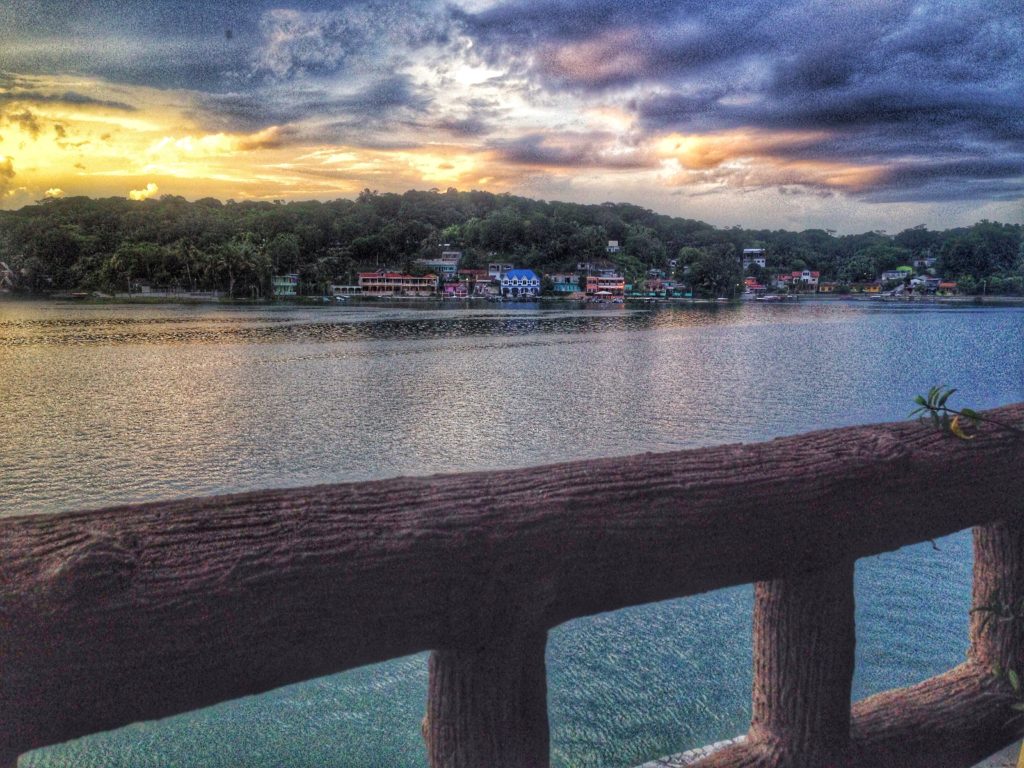
–
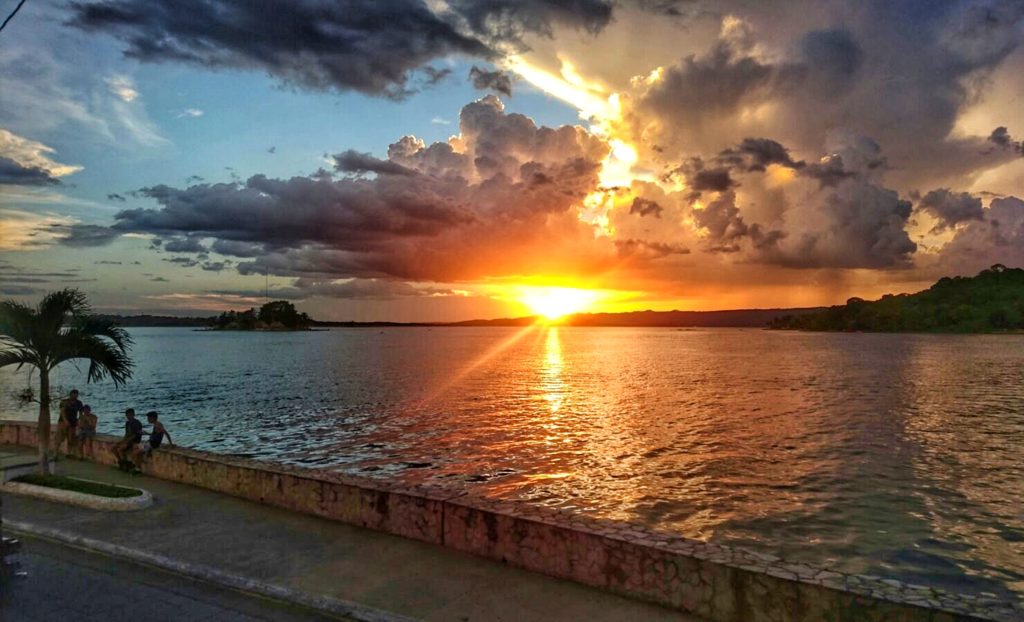
Watching the sunset from our hotel balcony
In Flores we had our first taste of Guatemalan food: pupusas. At under $1 for two, these thick, pan-fried and stuffed cornmeal tortillas are deceptively filling and we could have saved a lot of money eating more of them. Unfortunately, one thing Tom and I find hard to restrict ourselves on is food (and drink). As tasty as they are, who wants yet another set of grab-and-go pupusas when you can have a sit-down meal with a bottle of wine? Needless to say, this is why we’re so over budget and why I have to spend all my free time working rather than learning Spanish.
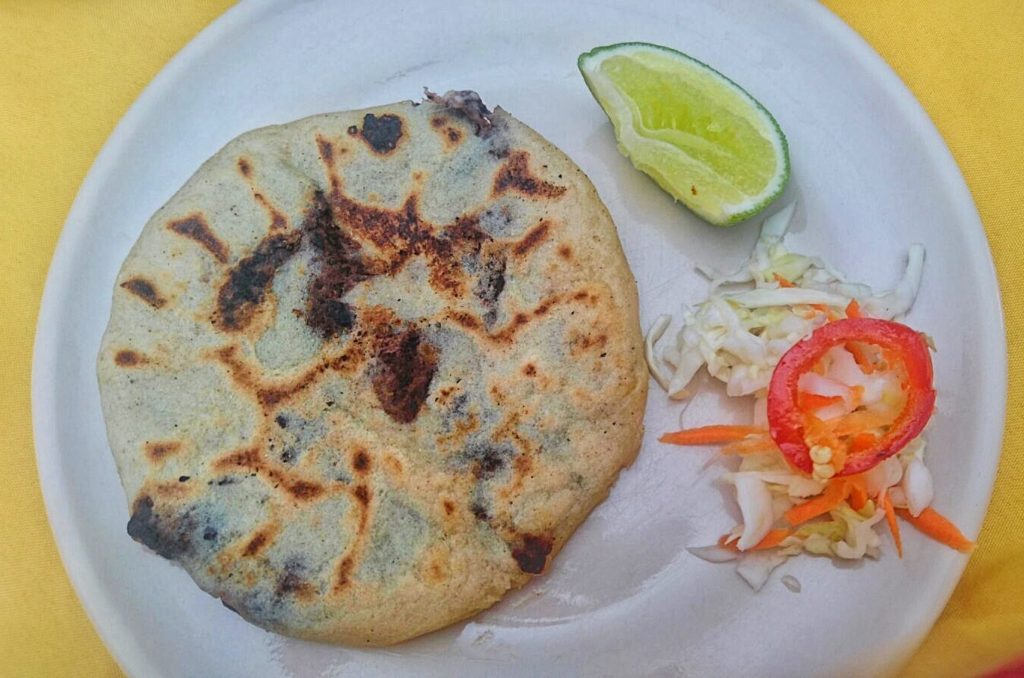
Refried bean and cheese filled pupusas
Tikal
Like most people, the reason we were in Flores was to go to Tikal, Guatemala’s most popular tourist destination. Tikal is the largest excavated site in the Americas, and these ancient Mayan ruins once formed one of the most important cities in the world. Tikal is situated in 222 square miles of jungle, which in itself was exciting enough: maybe my enthusiasm will wane after a few more months but for now I’m still childishly thrilled by the fact I’m in an actual jungle. Just hearing certain words is enough to make me grin like an idiot – Jungle! Rainforest! Cloudforest! – so it’s safe to say the anticipation was high. Luckily, Tikal didn’t disappoint.
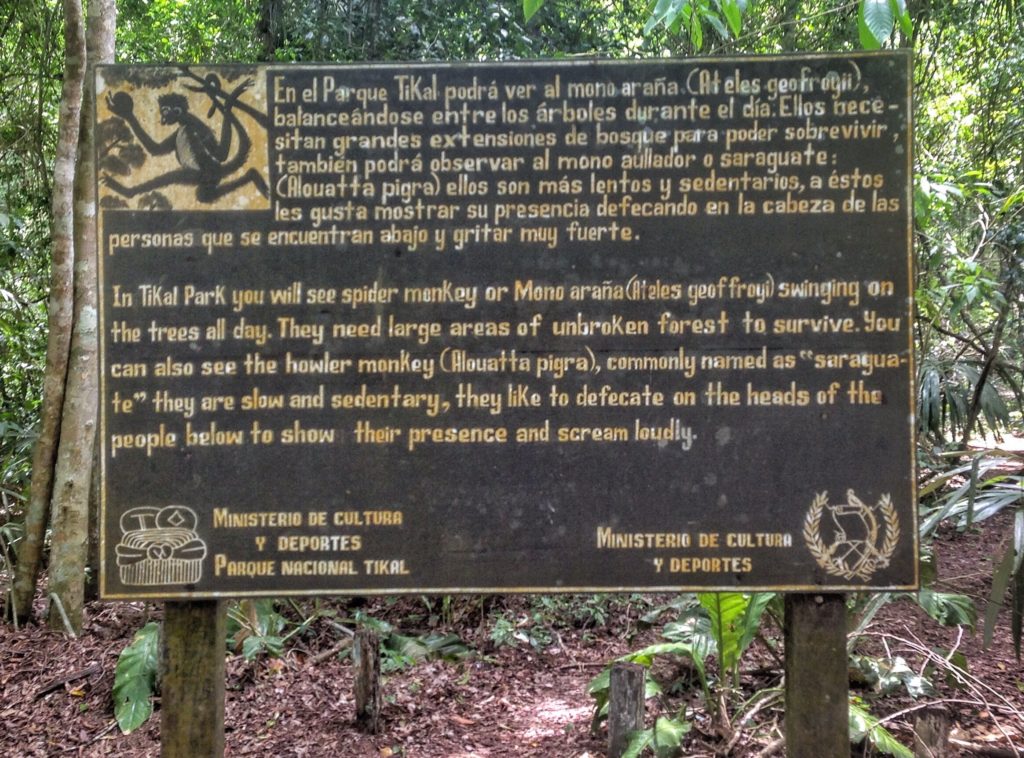
Advice to watch out for the Tikal monkeys: “they like to defecate on the heads of the people below”
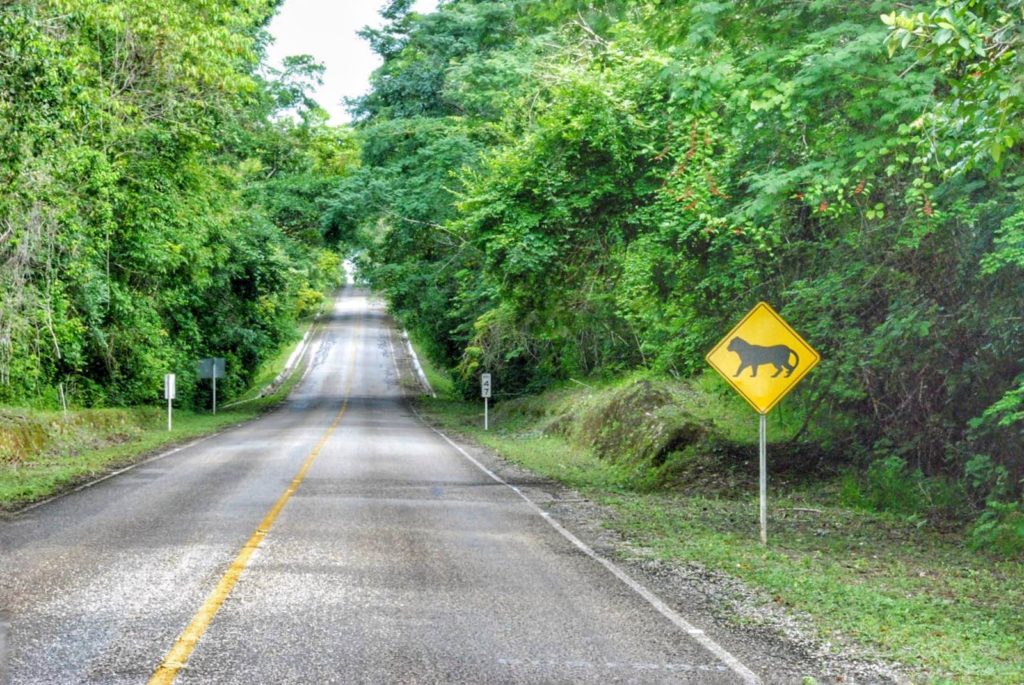
WARNING: JAGUARS CROSSING. Is this the coolest road sign ever?
It was almost unbearably hot, the kind of heavy, oppressive heat where you’re sweating so much you can drink your weight in water and still not need to go to the toilet. We followed the path as it wound through the forest, thankful the tree cover was dense enough to allow only glints of light through to the sun-dappled floor below. The site is enormous, so the other tourists are dispersed throughout the park and it feels like you have the place to yourself.
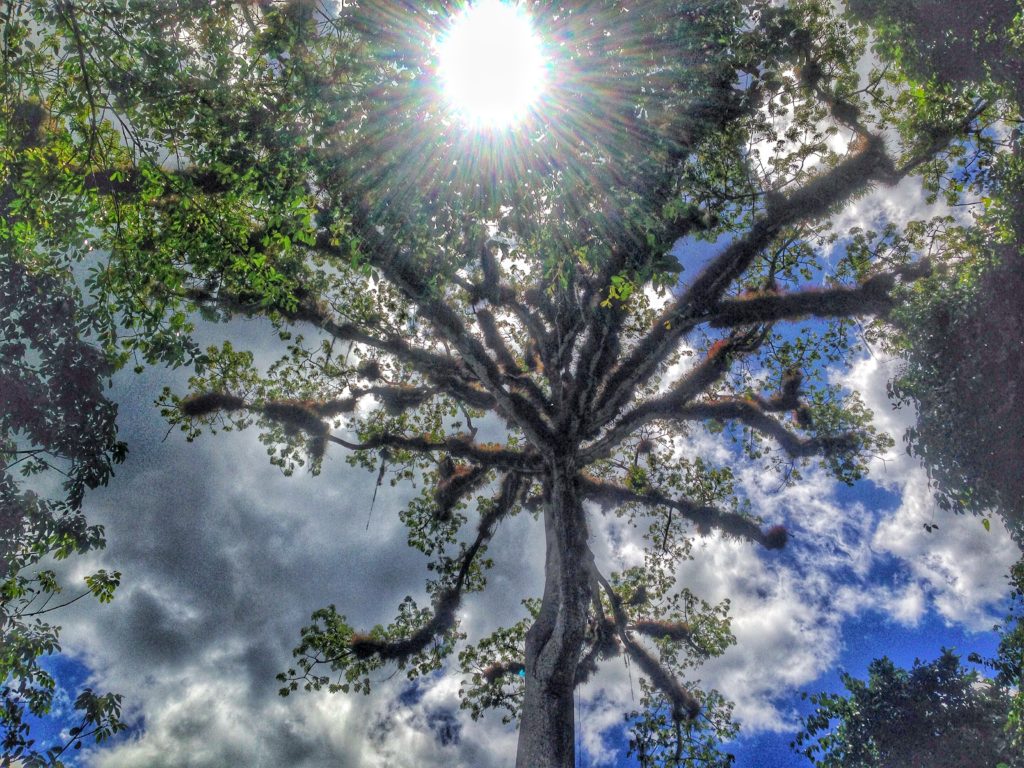
–
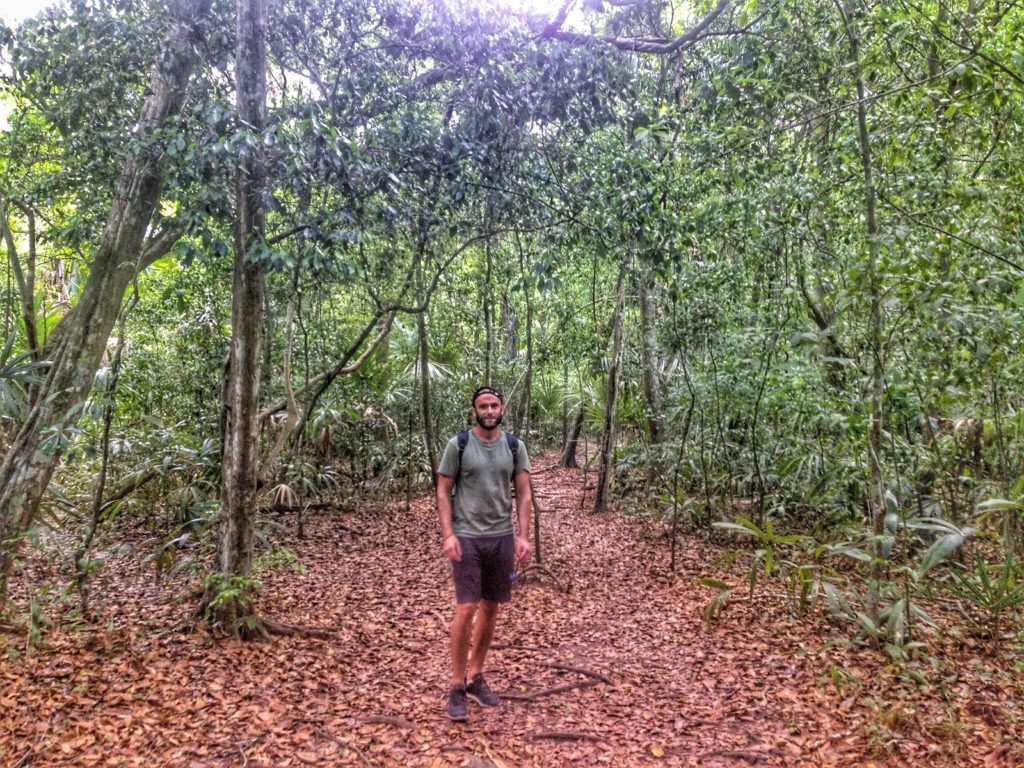
Making our way through the jungle to the Tikal main site
I didn’t expect the jungle to be quiet, but it still shocked me how loud it was. Aside from the squawks and hoots of birds and monkeys there was also an incessant droning, humming sound which I can only assume was the noise of jungle bugs. It honestly sounded like builders were hard at work just around the corner. As you’d expect, the bugs here are big: an enormous, whirring, helicopter-like flying insect chased Tom down the path, and it was genuinely so huge and alien-like that he legged it Selene-style.
So, Tikal. Made up of nine different plazas and courts and with over 3,000 structures, its size is hard to convey. At its peak (600 – 900 AD) Tikal was home to around 100,000 people and spread across 50 square miles. As the years passed, the jungle began to encroach and gradually claimed back the stone buildings. Even today only about 20% of the site has been uncovered, and it’s mad to think just how many thousands of Mayan temples are still hidden under earth and foliage.
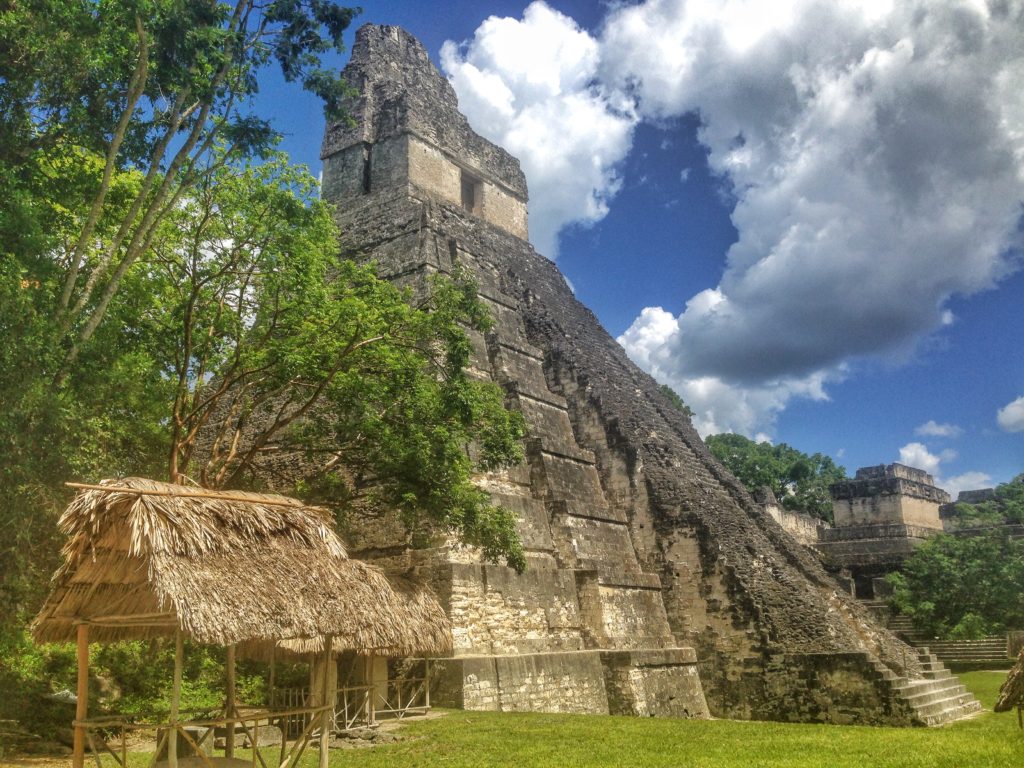
–
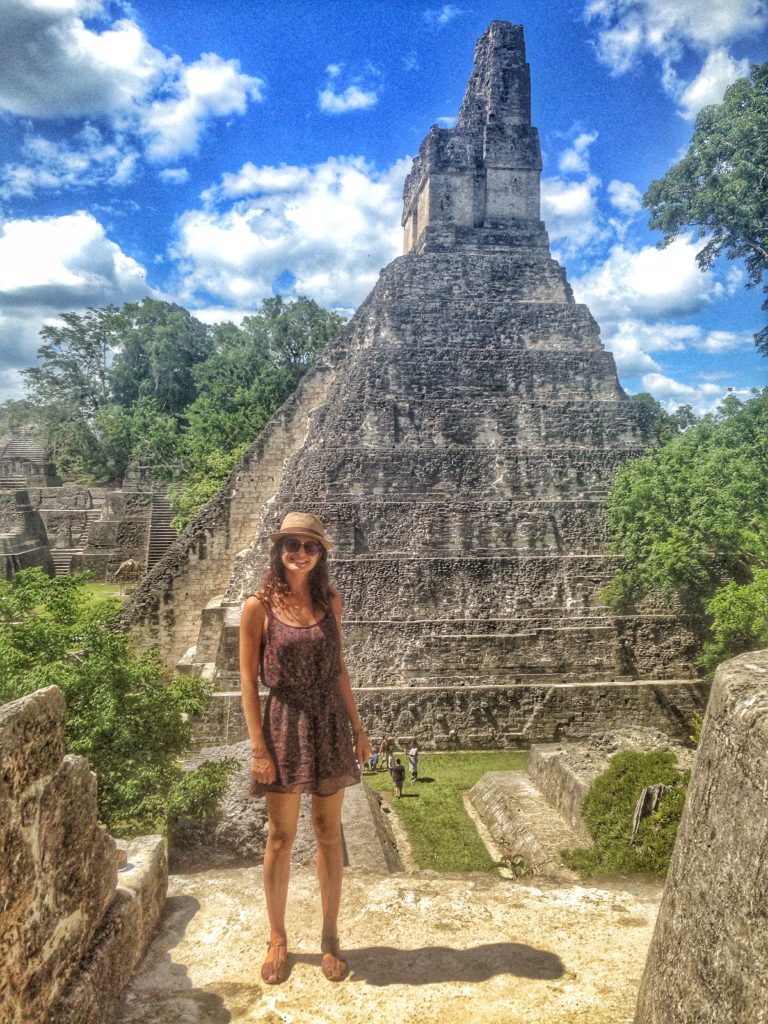
–
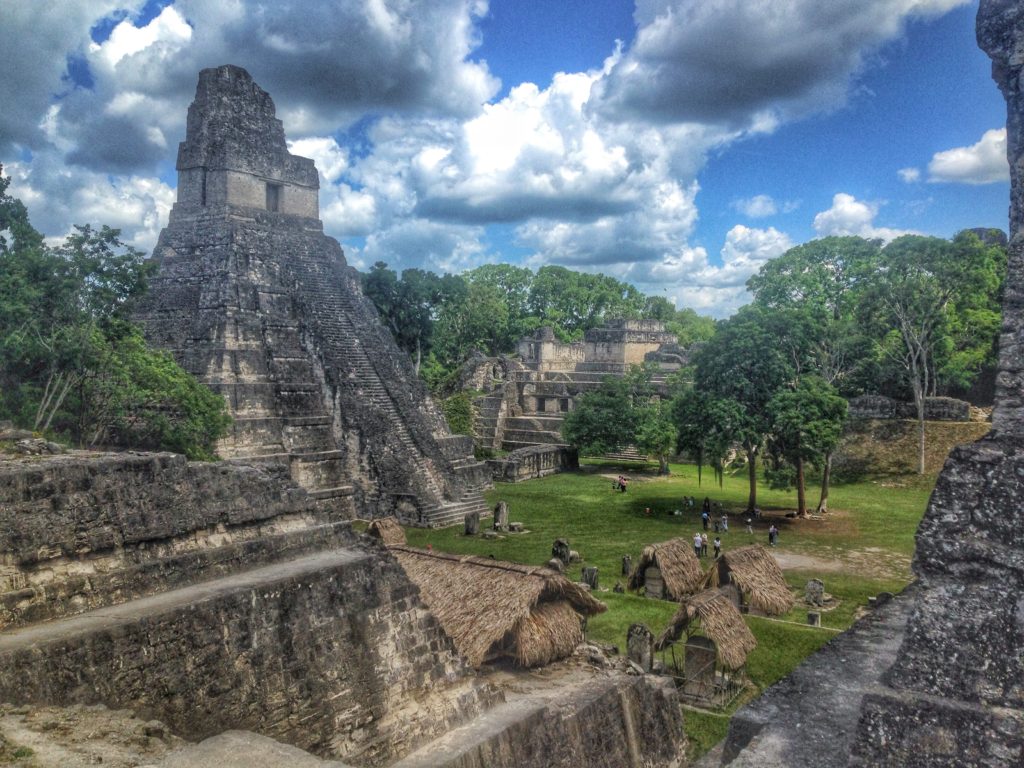
–
I’d seen countless photos of Tikal, but seeing the temples in real life was powerful. They’re so huge that the idea they were built in 600 AD just seems illogical. You can climb right to the top of some temples, and it was a little unsettling to think we were standing in the same spot humans were sacrificed 1,100 years ago. The sacrifices would occur at the top of the temples (the victims’ abdomens were cut open and their still-beating hearts removed, for those who want to know) and then the bodies were thrown down the steps to the waiting crowd below.
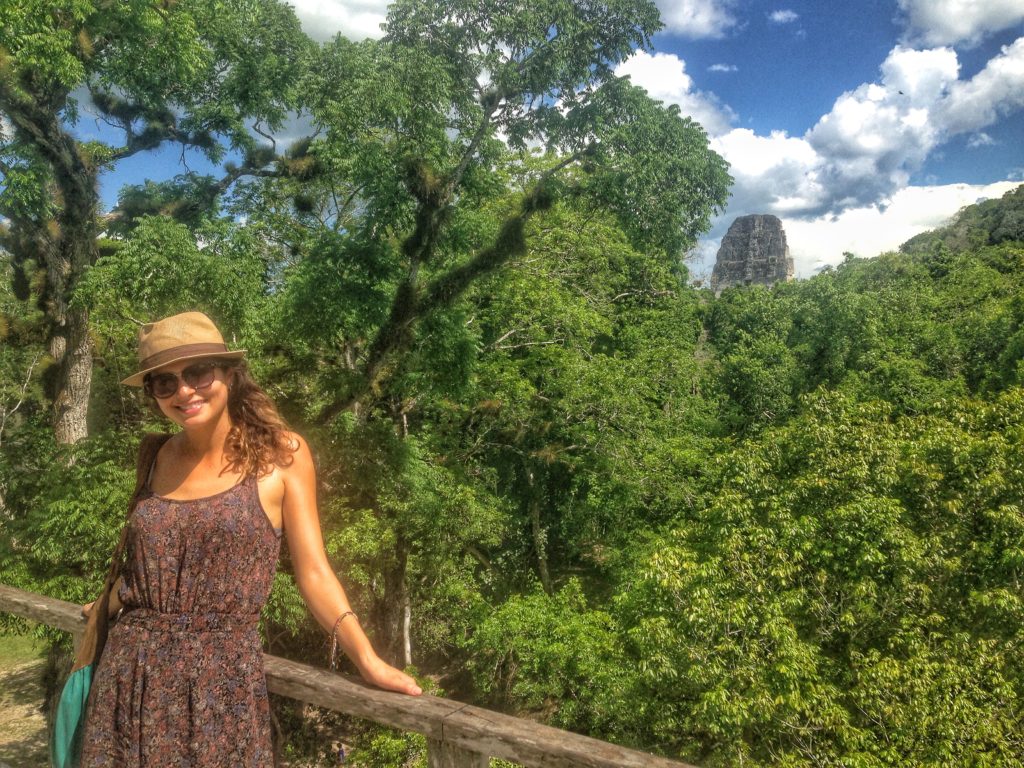
The pyramids poking through the jungle canopy was how Tikal was rediscovered
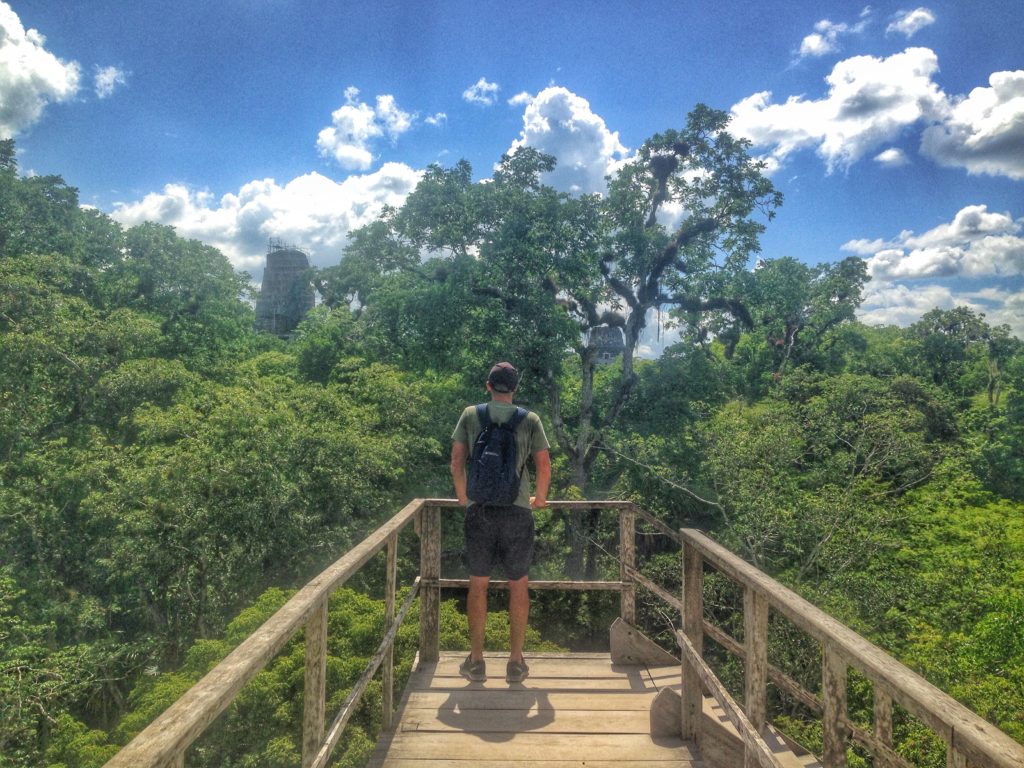
Tom enjoying the view
While Tom and I were standing at the top of the highest temple and gazing out at the panorama beneath, we heard a sound that made us stop in our tracks. I say sound, but it was a roar, a roar so loud it reverberated through the trees and echoed. We both turned to each other: “What the fuck was that??” It happened repeatedly and it was honestly quite terrifying.
It sounded like a cross between the velociraptors and T-Rex in Jurassic Park. Seriously! What the hell was it? Whatever it was must be HUGE, given the noise of the roar and the chilling guttural depth of it. We surmised it must be a jaguar – because what other Guatemalan creature could roar like that?
Well, apparently, a howler monkey can.
Now I knew howler monkeys were loud but I had no idea they sounded like that. Howler monkey? This was not a howl, it was a legitimate roar that freaked us out so much Tom began recording on the Go-Pro in case a jaguar leapt out and ate us. It sounds crazy now, but that repeated, menacing roaring is nothing like howling. If you’re going to minimise the sound then at the least call it growler monkey.
As it turns out, howler monkeys are the loudest land animals in the world, and when they’re really going to town, as they were that day, their howl roar can be heard from three miles away. If you’ve never heard a howler monkey, click here now and listen. If you don’t know what’s making that sound and you’re alone in the jungle, trust me – it’s scary!
Aside from our dinosaur/jaguar/howler monkey experience, we saw a lot of other wildlife, including a friendly white-nosed coati, a relative of the raccoon. We also saw spider monkeys chilling in the trees which was exciting – our first time seeing real monkeys! In the wild! We watched one directly above us for a while, but then we remembered the warning sign at the park entrance and moved on before the monkey could defecate on Tom’s newly shorn head.
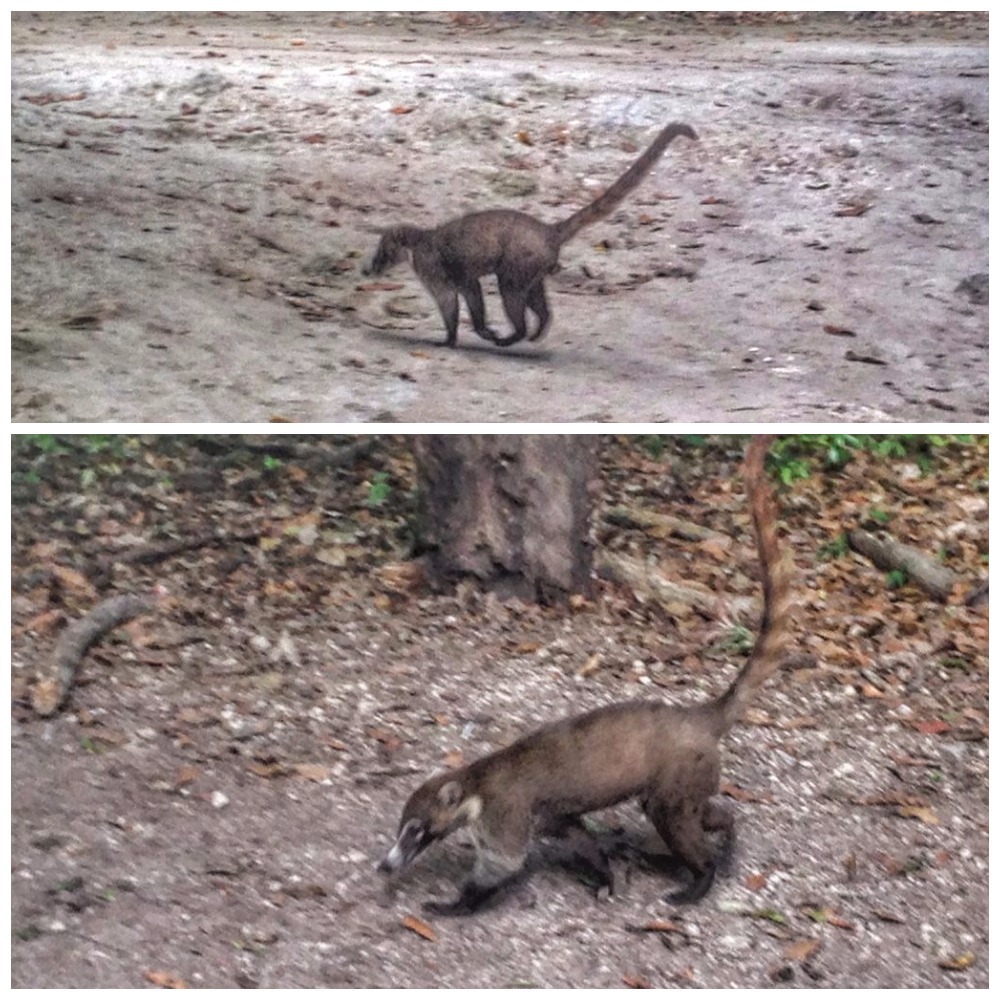
A white-nosed coati
Lake Atitlán
After Tikal we headed to Antigua for two weeks, which I’ve already written about, and though I was reluctant to leave the one perk was that we were heading to Lake Atitlán, a few hours drive away. Expectations were high: this is a place that’s described by the Lonely Planet as “the closest thing to Eden on earth”. I don’t think I’ve seen a more dramatic landscape. We arrived on a distinctly grey, drizzly day and it was still spectacular.
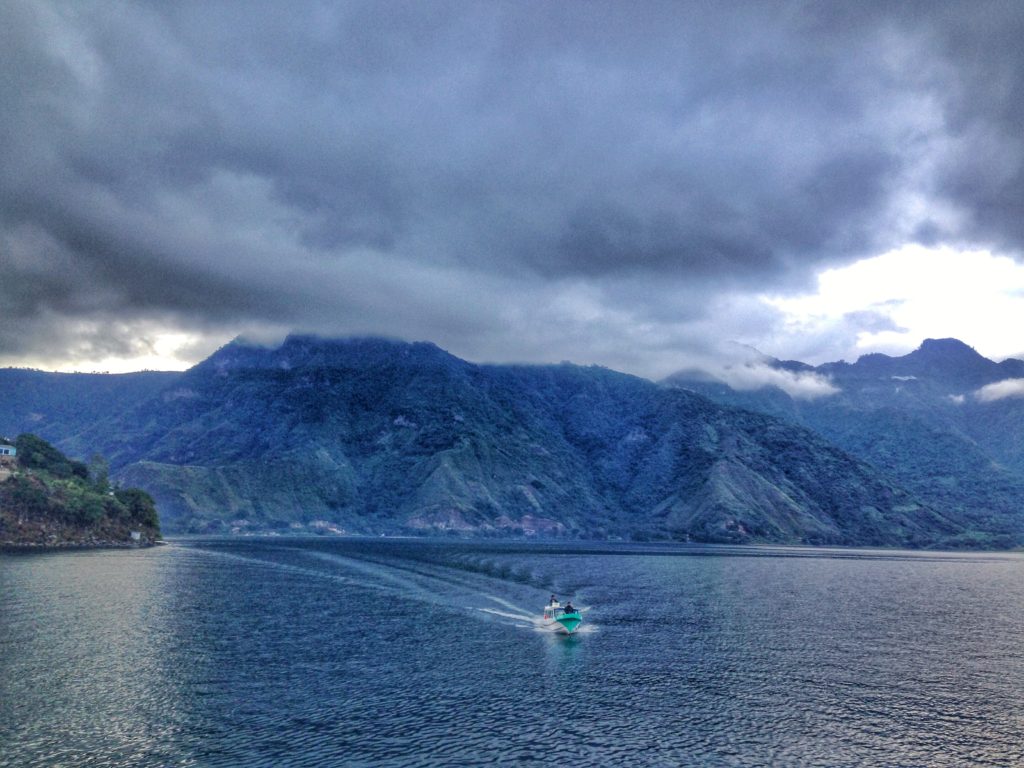
Lake Atitlan was in all its gloomy glory on the day we arrived
The lake is big (130 square km), deep (an unnerving 340 metres) and surrounded by fertile hills, craggy, fern-covered valleys and towering volcanoes that emerge from behind misty clouds. There are seven Mayan towns dotted around the lake perimeter, and despite the tourism of this area so much of the Mayan way of life here seems unchanged: few people speak any English, the villagers still wash in the lake, and the shops are full of local women selling their beautiful hand-woven, colourful clothes.
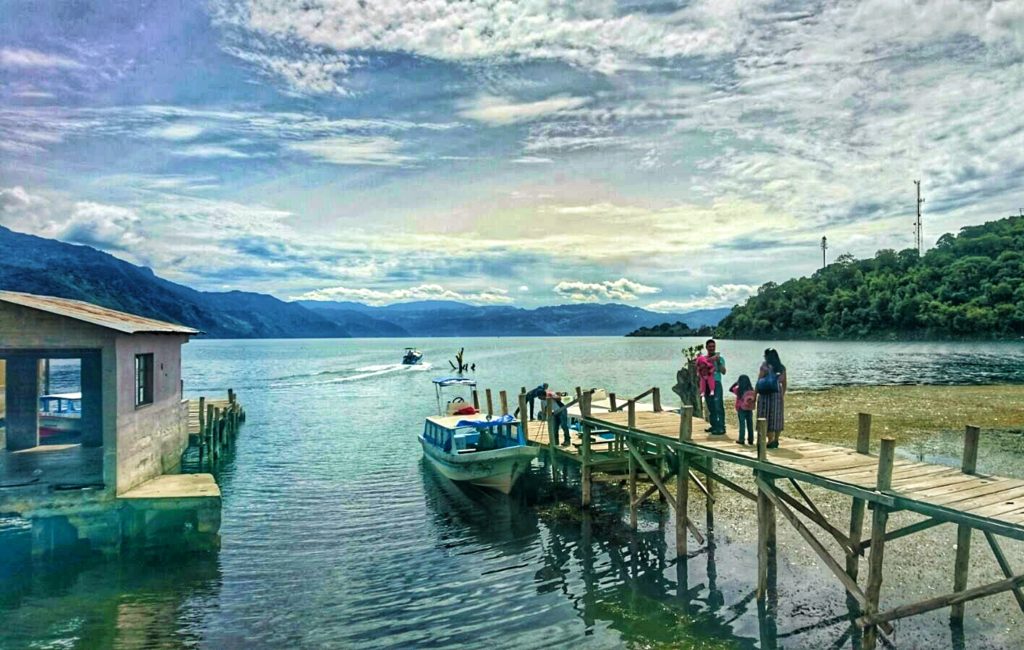
“The closest thing to Eden on earth”, apparently
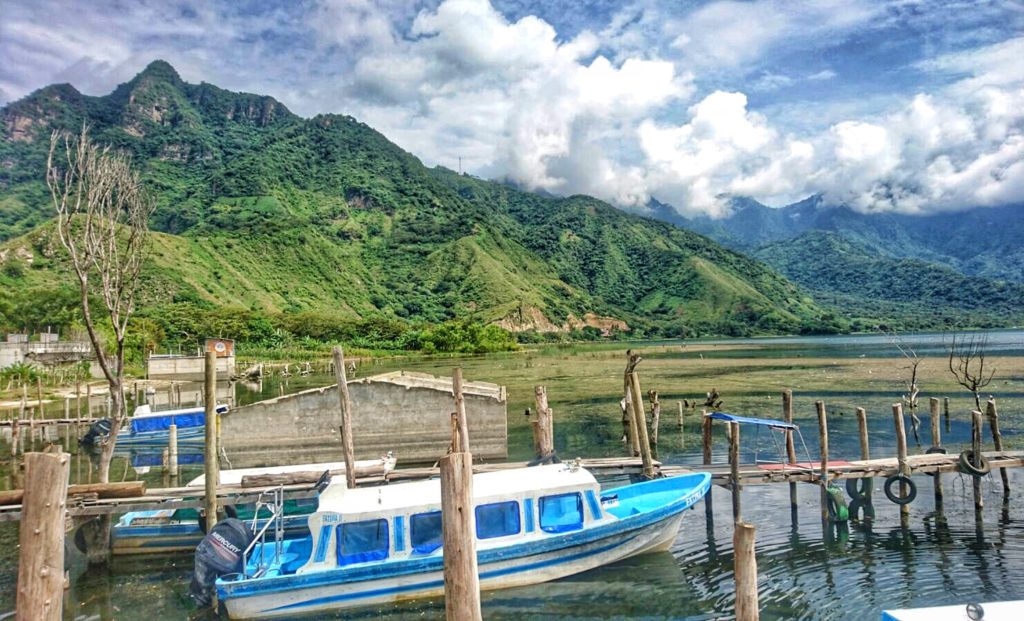
–
We stayed in San Juan, a small village about five minutes from the larger backpacker town of San Pedro. As the majority of restaurants and bars are located in San Pedro, most days we would get a tuk tuk there to eat and join the ranks of countless other gringos gazing out at the lake over a drink. Like Antigua, the variety of vegetarian food on offer here was unexpectedly good. We ate several times at Cafe Atitlan, which serves up delicious broccoli, carrot and pepper “hippie” quesadillas and a great tofu mie goreng – an Indonesian fried noodle dish in a peanut sauce.
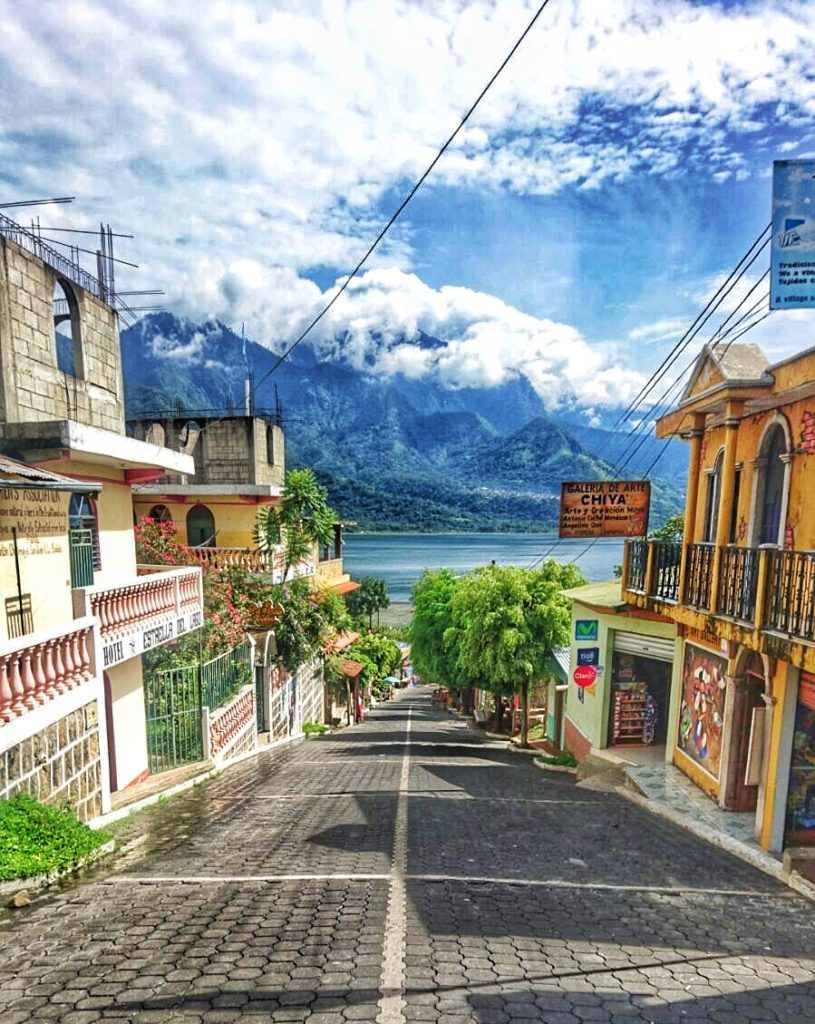
The road down to the harbour at San Juan
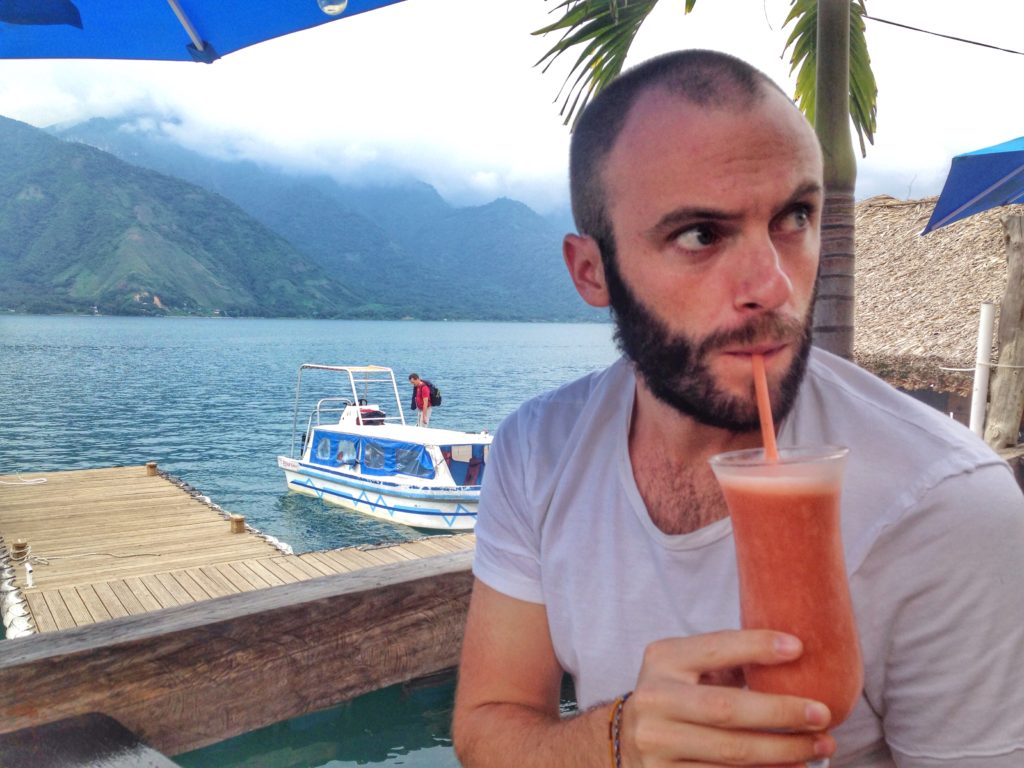
Drinks and a furrowed brow by the lake
After spending a lot of money on accommodation in Antigua I thought we’d cut costs, and booked us a private room in a rustic-but-nice hostel for £8 a night. Run by a sweet local man, the hostel had ancient Mayan sculptures in the gardens and we made some friends there, a lovely American/Australian couple with a sweet puppy, and another Australian guy who became Tom’s new-best-ever-friend for a day. But it was on our last night here that I had my first intensely upsetting insect experience of the trip.
I was going into our bedroom. Tom was already asleep so I was creeping about using my torch. Suddenly, I heard the loudest insect-buzzing I’d ever heard in my life. Something, some enormous winged creature, was flying around me, and in the dark I had no idea what or where it was. As I jolted in shock, my torch shone upon an absolutely massive spider on the wall inches in front of me; as I moved the torch up a bit more, there were more spiders on the walls, including several right above the head of my bed, waiting for me to fall asleep so they could nest in my hair and lay their spider eggs.
By that stage the buzzing thing was circling me and I was shrieking and tearing at my clothes and hair like a madwoman. Tom woke up and did his best to sort the situation while I squealed unhelpfully. The giant spider met the end of Tom’s flip flop (which I felt really, really bad about the next day) and the flying, buzzing monstrosity – the main source of my terror – just disappeared. Wrapped tightly in a sheet in case the flying thing came at me again and with the American girl’s tale of waking up to find a giant bug on her neck ringing in my ears, it wasn’t a great night’s sleep.
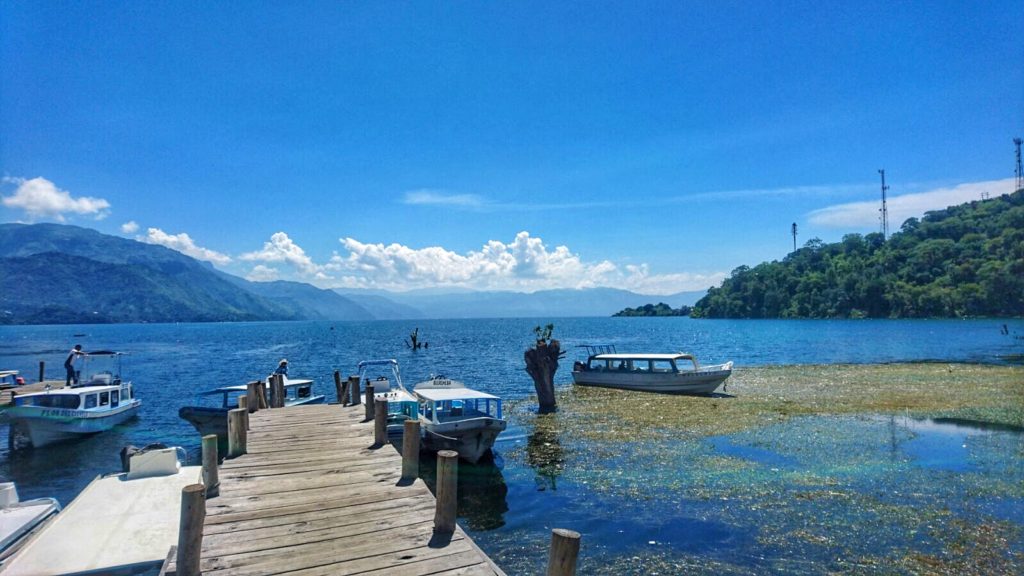
–
Still, even sharing a room with about 47,420 bugs couldn’t take away from how much I loved Lake Atitlán. The place is breathtaking and I wish we could have stayed longer but, still behind schedule, Nicaragua was calling us. Like Antigua and the rest of Guatemala, Lake Atitlán was an absolute joy to explore and, insects aside, I loved every moment of it.
It’s not adios, Guatemala – it’s most definitely hasta luego.


